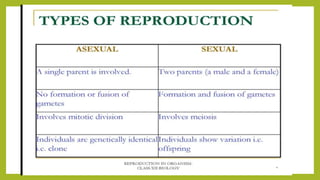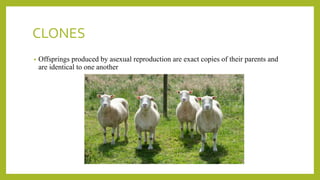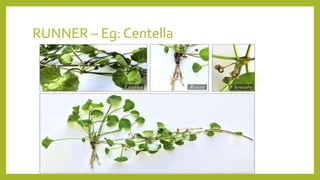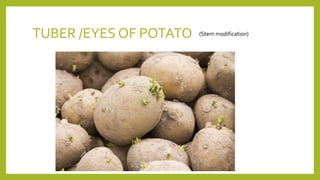REPRODUCTION IN ORGANISM.pptx
- 5. CLONES • Offsprings produced by asexual reproduction are exact copies of their parents and are identical to one another
- 10. RUNNER – Eg: Centella
- 11. SUCKER
- 12. TUBER /EYES OF POTATO (Stem modification)
- 13. RHIZOME OF GINGER (Stem modification)
- 14. OFFSET – Eg: Pistia
- 16. BULBIL – Eg : ONION,Agave
- 17. PREVIOUSYEAR QUESTIONS • Morphologically and genetically similar individuals are called_________ • Amoeba asexually multiplies by binary fission,whereas sponge by ______ • b)Water hyacinth vegetatively multiplies by offset, whereas agave by_________ • Yeast asexually multiplies by budding whereas Penicillium by ___________ • (b) Bryophyllum vegetatively multiplies by adventitious buds whereas water hyacinth by ............_ • Which among the following is a vegetative propagule? • (a) Rhizome (b) Gemmules (c) Zoospores (d) Conidia
















